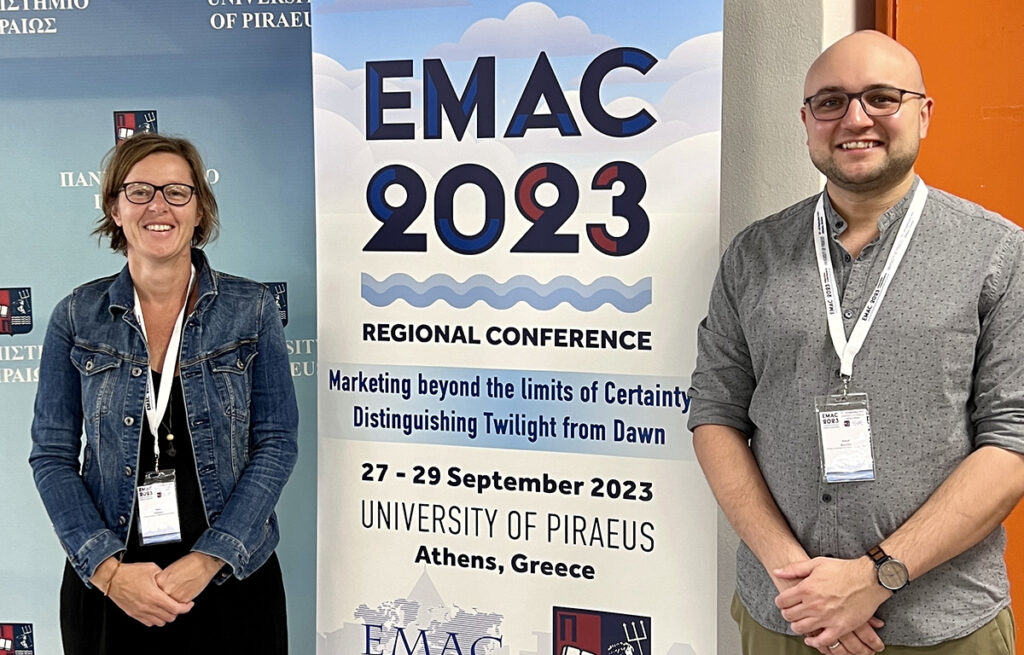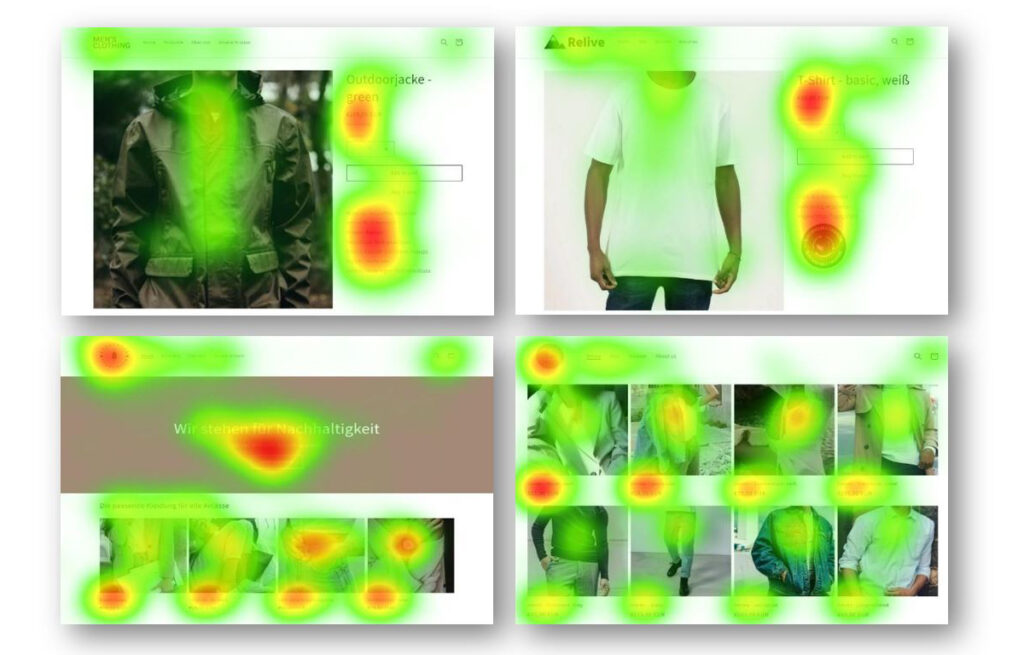At the EMAC conference, David Bourdin and Ilona Pezenka presented an eye tracking study based on a master’s thesis that examines the impact of sustainability features in online fashion stores on perceived product sustainability.
Today, consumers buy 60 % more clothes than they did in 2000. Fast fashion is no longer a new word in this context and has already caused a lot of excitement. It is associated with cheap clothing that lasts barely a season, from production countries with little or no environmental requirements, and manufactured under poor working conditions. But the increasing importance of sustainability in consumers’ purchasing decisions is also driving many companies to engage in “greenwashing”. Fashion suppliers who are genuinely serious about improving their environmental footprint, however, are therefore faced with the question of how best to position their brand and how to communicate and signal their sustainability activities and efforts in order to differentiate themselves from competitors with less ethical business practices.
Lisa Greslehner, a graduate from the Master’s program in Marketing & Sales Management, took a closer look at the topic in her master’s thesis. Her study, which was conducted under the supervision of Senior Researcher David Bourdin, deals with the topic of how visual design aspects in online stores (eco-labels, colors, logo form) influence the perception as a sustainable company. In a laboratory experiment, 77 test persons looked at pages of a fictitious fashion online store. For this purpose, the course of the view was analyzed by means of eye tracking in the Web Analytics Lab of FHWien der WKW under the direction of Senior Researcher Ilona Pezenka. Afterwards, the participants filled out a questionnaire that surveyed their perception of sustainability with regard to the products and the online store as well as demographic characteristics and environmental awareness.
Country of origin determines sustainability perception
Analysis of the eye-tracking data shows that country-of-origin designations must be visually fixated for at least half a second (approx. 500 milliseconds) for them to be perceived. By comparison, the brain perceives a light signal from 50 to 80 milliseconds. This suggests that country stereotypes only enter product perception after a certain minimum period of conscious visual processing. Surprisingly, the country-of-origin label was noticed by 100 % of all subjects, even though it accounted for only 0.4 % of the screen area, and even without a visually salient design. In contrast, no correlation was found between eco-label, fixation time and environmental awareness of the test persons.
Very intrusive or exaggerated display formats for country information are not necessary. Rather, the challenge is to get consumers to pay attention to country information for a sufficiently long time. Eco-labels, on the other hand, do not influence the perception of sustainability.
Color and shape influence the sustainability rating
In addition, the results show that green is not the unique color of sustainability, but colors from nature generally have an influence on the perception of sustainability, such as cream or sand. Round logos were generally perceived more credible than square ones, but without statistical significance.
David Bourdin and Ilona Pezenka presented the master’s thesis-based study, “Perception and Processing of Green Cues in Fashion Online Stores: An Eye Tracking Experiment,” at the Regional Conference by the European Marketing Academy (EMAC) in Piraeus, Greece, in late September.


